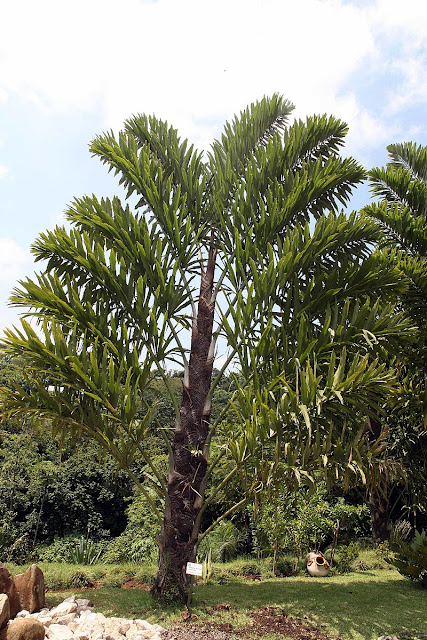 |
| How to grow Wallichia disticha |
Native to the lowlands and montane rainforests of the Himalayas, India, Laos, Myanmar, Thailand, and Nepal, Wallichia disticha is just one of seven species within the genus named in honour of Danish botanist Nathaniel Wallich (1786-1854). The species name 'disticha' is derived from the Greek 'dis' and 'stichos' (meaning two lines), a reference to the two opposing rows of leaves. It is also the only species within the genus with this unusual leaf arrangement making it both a handsome and desirable species. The arching, pinnate leaves are approximately 2.4-4.5 metres long.
Commonly known as the False sugar palm, Wallichia disticha is a fishtail-like palm with a solitary trunk and large, stiff, feathery leaves which form from (usually) a single trunk. Under favourable conditions you can expect Wallichia disticha to reach an overall height of between 6-9 metres. The canopy is usually half that of the height. Specimens that are cultivated in dry or infertile soils will tend to produce smaller leaves and be smaller in height.
How to grow Wallichia disticha
 |
| How to grow Wallichia disticha |
Wallichia disticha it is widely cultivated in subtropical and warm temperate regions and is surprising cold hardy capable of surviving freezing temperatures down to -2 degrees Celsius. Even colder temperatures can be survived if only for short periods. This means that it is possible to grow Wallichia disticha outside in the milder regions of Great Britain.
Once established avoid moving as the root system of this species is particularly sensitive to being dug up. This will often result in shocking the plant causing it to prematurely come into seed and then die.
Very little maintenance is required other than to remove any diseased, damaged or drying leaves, but do not prune until all of the leaf's green colour has disappeared.
Main image credit - David Stang Else Kientzler Botanical Garden https://creativecommons.org/licenses/by-sa/4.0/deed.en
In text image - By Photo by David J. Stang - source: David Stang. First published at ZipcodeZoo.com, CC BY-SA 4.0, https://commons.wikimedia.org/w/index.php?curid=61220750







No comments:
Post a Comment